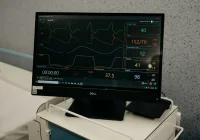Candidozyma auris (formerly Candida auris) continues to expand across European healthcare networks, with sustained transmission in multiple countries and a sharp rise in reported cases. Between 2013 and 2023, European Union and European Economic Area countries reported 4 012 cases of colonisation or infection, culminating in 1 346 cases in 2023 alone across 18 countries. Countries in the Western Balkans and Türkiye also detected cases during the same period. Despite these increases, many systems still lack comprehensive, standardised surveillance and notification mechanisms, limiting the visibility of transmission. The evolving epidemiology, combined with variable laboratory capacity and guidance, underscores the importance of timely detection, coordinated reporting and robust infection prevention and control.
Rapid Growth Across EU/EEA Networks
Reported case counts accelerated after 2020, reflecting both ongoing transmission and retrospective corrections. Spain accounted for the largest cumulative number from 2013 to 2023 with 1 807 cases, followed by Greece with 852, Italy with 712, Romania with 404 and Germany with 120. The first case within the EU/EEA during this period was documented in France in 2014, and an initial peak followed in 2017, largely linked to an outbreak in Spain. By 2023, 1 346 cases were reported by 18 countries, illustrating a continued upward trajectory.
Must Read: Strengthening Infectious Disease Control in Hospitals
Beyond the EU/EEA, six of seven invited enlargement countries responded, reporting 121 cases between 2013 and 2023. Türkiye reported 114, Kosovo six and Bosnia and Herzegovina one, while Montenegro and North Macedonia reported none. Serbia reported eight cases in 2024, outside the formal survey period, and Albania did not respond.
Although these numbers show rapid expansion, they represent only a fraction of the true burden where systematic surveillance is absent or limited. The variability in detection and reporting practices, including whether colonisation is captured, influences national totals and complicates cross-country comparisons.
Outbreak Patterns and Endemic Spread
Recent outbreaks were documented in Cyprus, France and Germany, while Greece, Italy, Romania and Spain described regional endemicity where distinguishing individual outbreaks was no longer feasible. The interval from the first detected case to regional endemicity was estimated at five to seven years for Greece, Italy and Spain, highlighting the speed with which C. auris can disseminate through hospital networks when introduction is followed by sustained transmission.
Country narratives illustrate divergent trajectories. In Spain, the first outbreak emerged in 2016 at a tertiary hospital in Valencia with onward regional spread. Case numbers have since declined in the most affected centres as awareness grew, targeted surveillance protocols were introduced and control measures were implemented, although a national surveillance system is not in place. Italy detected its first case in 2019 in Liguria, with increased cases in 2020 and 2021, spread to Emilia-Romagna and other regions, and classification as regional endemicity by 2024. While notification is mandatory, under-notification limited completeness; consequently, case numbers used for analysis drew on additional data requested from regional authorities.
Greece reported its first case in 2019, with rising numbers during the COVID-19 pandemic and multiple hospital outbreaks. By April 2024, hundreds of cases had been detected across facilities, and one rehabilitation centre allocated a dedicated ward area for patients colonised or infected with C. auris. Greece operates a nationwide, hospital-based, voluntary notification system that is laboratory-enhanced and case-based. Romania first detected C. auris in early 2022 in several Bucharest hospitals, with additional detections in Cluj in 2023; genomic analysis of a subset indicated clade I predominance with a large cluster. In Germany, initial detections in 2015 were linked to care abroad, with first in-country transmissions identified in 2021 and 2022. Case counts increased further in 2023 with several hospital outbreaks, including one involving 42 cases and limited inter-facility spread. Mandatory notification began in July 2023 but applies to invasive isolates, so many colonisation events reported to the reference centre were not captured through mandatory channels.
Preparedness Gaps and Surveillance Variation
Capacity and policy measures varied considerably across the 36 participating countries at the time of the June 2024 survey. A mycology reference or expert laboratory existed in 29 countries, and reference testing for hospital laboratories was available in 23. Guidance for laboratory testing was reported by 24 countries, while clinical management guidance was present in 11 and infection prevention and control guidance in 15. Mandatory notification was in place in nine countries, and 17 reported a national surveillance system.
These headline figures mask substantial heterogeneity in surveillance design and scope. Systems ranged from voluntary to mandatory, and case definitions differed, with some countries collecting all C. auris cases, others focusing on infections, bloodstream infections or outbreaks. Differences also extended to how outbreaks were defined, affecting comparability and trend interpretation. This heterogeneity is reflected in national experiences. Some countries rely on voluntary isolate submissions to national mycology laboratories, sentinel networks or ad hoc data collection, while others have broadened notification to improve completeness. Where surveillance does not routinely capture colonisation or inter-facility transmission, the visibility of spread is reduced and opportunities for early interruption of transmission may be missed.
The survey’s findings indicate that rapid spread and wider geographic distribution will make sustained control increasingly challenging. Nonetheless, there are examples from within the region where transmission was controlled and further spread prevented, demonstrating that early detection, timely reporting and prompt infection prevention and control can mitigate impact when implemented consistently.
C. auris continues to advance across European healthcare systems, with accelerating case counts, established endemicity in several countries and ongoing outbreaks elsewhere. Variation in laboratory capacity, guidance, notification and surveillance scope constrains situational awareness and complicates cross-country comparison. Strengthening early detection, harmonising reporting where feasible and ensuring rapid implementation of infection prevention and control remain central to limiting onward transmission. Coordinated surveillance and preparedness will be critical to protect patients, maintain service continuity and support effective policy responses.
Source: European Centre for Disease Prevention and Control
Image Credit: iStock










